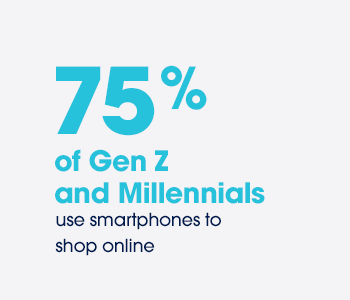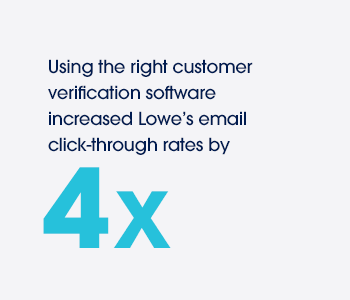8 Tips for Choosing the Right Customer Verification Software

Identity marketing is a highly effective form of personalized marketing because it engages consumer tribes based on their deep-seated attributes, such as their life stage (students) or occupation (teachers). In a previous post, we explained that using customer verification software is essential to making this new form of personalization work because it:
– Prevents fraud.
– Underscores your brand’s commitment to the group.
– Makes the offer more appealing by ensuring its exclusivity.
But for customer verification software to be truly effective, you need to pick the right platform.
Checklist for Picking the Right Customer Verification Software
When choosing customer verification software, make sure it:
01 Uses Authoritative Data Sources
Older methods of verification are greatly susceptible to fraud. ID cards can easily be faked or used after they expire. And verification based on an email address, such as relying on an .edu address to verify students, has serious limitations.
Instead, you want customer verification software that uses authoritative data sources. These platforms rely on comprehensive, accurate, current information drawn from the source systems, such as a government database or a university’s office of the registrar. Platforms that use multiple data sources further improve the accuracy and reliability of verification.
02 Includes Document Review for 100% Coverage
It’s impossible for a platform to have complete coverage for a consumer tribe, even a platform that uses thousands of data sources. To ensure everyone who is eligible for your offer can redeem it, choose a customer verification software that has back-up document review.
And don’t settle for a solution that requires customers to fax, email, or submit copies of credentials via “snail” mail. In order to provide the best customer service experience possible, the provider of your customer verification software should:
– Know what documents are considered valid forms of ID in different countries.
– Support the ability to immediately upload documents 24/7 online.
– Provide a streamlined document review within minutes or hours—not days or weeks.

03 Creates an Entirely In-Brand Experience
Personalized marketing is your opportunity to connect directly with your customers and bring them into your brand. So watch out for verification solutions that send your customers to a third-party website to be verified. You’ll lose control of the customer journey, and worse, the third party that gets all your customer data can then sell it or use to remarket to your customers.
Instead, your customer verification software should should keep your customers inside your brand experience. This will allow you to own the customer data so you can continue to market, engage, and effectively build customer loyalty with personalized content.
04 Requires Minimal Fields for a Streamlined UX
Don’t make your customers run a virtual gauntlet just to access your offers. If they have to complete too many fields, or provide personally identifiable information (PII) like a social security number, they might abandon the process.
Keeping the experience simple will increase conversions. The best solutions that use authoritative data sources won’t require much data in order to verify the customer.
05 Enables “Mobile First” Responsive Design
Your customer verification software should have a responsive web design that fits any screen. This is critical to remaining competitive and winning your audience’s business.
A study from Google and Heart+Mind Strategies showed that 46% of respondents said they prefer to use their smartphones for the entire purchase process. And eMarketer predicted that smartphone retail mobile commerce sales will reach $203.94 billion in 2019, making up 34% of all US ecommerce sales.
Customer verification software that is mobile-friendly is even more important for brands trying to reach young consumers. Seventy-five percent of Gen Z and millennials use smartphones to shop online, and that number will only rise.

06 Provides Built-In Re-Engagement to Increase Conversions
Every marketer knows that cart abandonment can kill conversions. Simply using email to re-engage with customers who don’t complete the verification process is necessary, but not sufficient.
Make sure your customer verification solution can collect a user’s SMS number so you can also use text messages to re-engage. This is particularly important when you are targeting younger shoppers. A whopping 83% of Gen Z say they “wish more businesses” would use texting.
07 Includes Enhanced Fraud Protection
Let’s face it: fraudsters are always out there trying to figure out how to exploit your offers. They create fake educational institutions, falsify documents, spoof identities, and more.
To stop them in their tracks, your customer verification software needs to include additional layers of fraud protection. Examples of this include the ability to detect falsified images and credentials, and to cross-check the shopper’s identity to make sure it is not linked to a fraudulent identity.
08 Is Privacy-Friendly
Delivering personalized offers means you’ll have to collect some customer data, but you’ll pay a steep price if you don’t do it right. Eighty-seven percent of consumers say they will take their business elsewhere if they don’t trust a company is handling their data responsibly.
Be sure your customer verification software doesn’t collect invasive PII, like a social security number—a piece of data only 18% of shoppers say they would be willing to provide.
Instead, your solution should require only basic personal data. More than two-thirds of consumers are willing to provide their name, date of birth, email, and physical address to receive a personalized offer. And don’t forget to make sure your customer verification provider doesn’t use the data to remarket to customers, like third-party affiliates do.
Customer Verification Software: A Success Story
Choosing a platform with these features prevents fraud, saves time and resources, increases engagement, and boosts loyalty.
This was the case for home improvement retailer Lowe’s. The company initially gave the military a personalized offer of 10% off their entire purchase, but it relied on cashiers at its retail stores to review military documents to verify shoppers’ eligibility.
This meant military members had to reveal personal information, such as the “character of service” listed on veteran’s separation papers. It also put the burden of deciding whether to honor the discount or not on store employees and slowed down the checkout process.
To streamline the process, Lowe’s relaunched their program using customer verification software that met all the above criteria.
This gave military members the ability to instantly verify their status online and automatically apply their discount on all future online and in-store purchases. It also prevented fraud, allowed the company to avoid retaining any PII, and freed up Lowe’s employees to provide better in-store service.
Using the right customer verification software boosted Lowe’s customer engagement and loyalty. The company increased:
– Email open rates by 2x.
– Email click-through rates by 4x.
– The number of trips the average military member made to a Lowe’s store by 2x.
